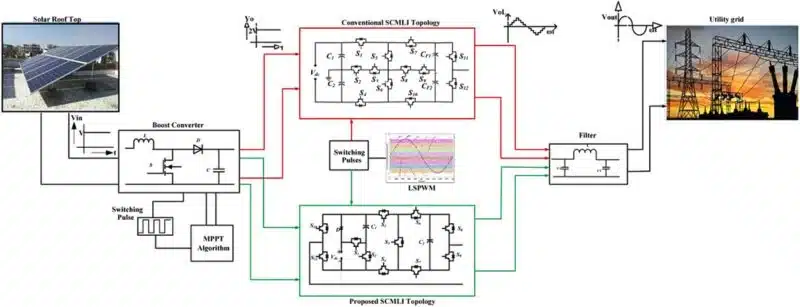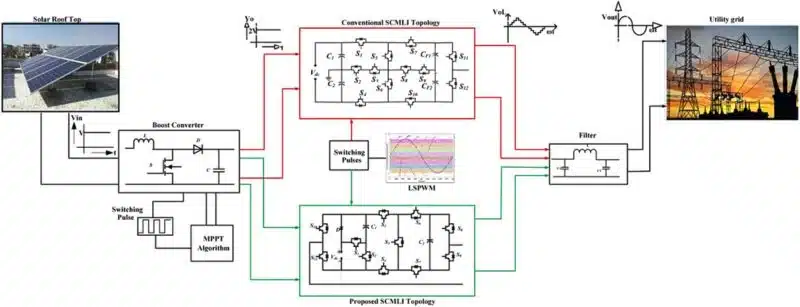
Researchers develop a Switched-Capacitor based, nine-level inverter for efficient solar power conversion with 96.5 percent efficiency.

Researchers from Andhra University and Vignan’s Institute of Information Technology have developed a switched-capacitor-based, nine-level inverter that operates from a single DC source and delivers up to 96.5% efficiency.
The inverter removes the need for separate DC-DC stages, magnetic components, and active voltage balancing, potentially reducing system complexity. It can be scaled to higher power or three-phase configurations. It is designed for photovoltaic and other low-voltage DC applications.
It uses two capacitors, nine semiconductor switches, and one diode to generate nine voltage levels. The configuration alternates capacitor connections between series and parallel modes to produce output voltages from -4 to +4 times the input, in discrete steps.
Where the capacitor voltages remain balanced through the switching sequence without additional control circuits.
Level-shifted Pulse Width Modulation is used to generate the multi-level waveform. The modulation index determines how many voltage levels are produced, allowing adaptation to varying operating conditions while limiting voltage signal distortion.
The design reduces total standing voltage across devices to 21 VDC, equivalent to 5.25 per unit of the output voltage. This lowers thermal and electrical stress on the components. Switches are grouped by voltage ratings to optimise distribution of stress.
The researchers suggest applicability in rooftop solar, battery systems, and EV charging where compact, high-efficiency inverters are required for grid-compatible AC generation from low-voltage DC sources.
Thermal modelling in MATLAB showed peak losses above 5 kHz, though efficiency remained stable across resistive, inductive, and mixed loads.










